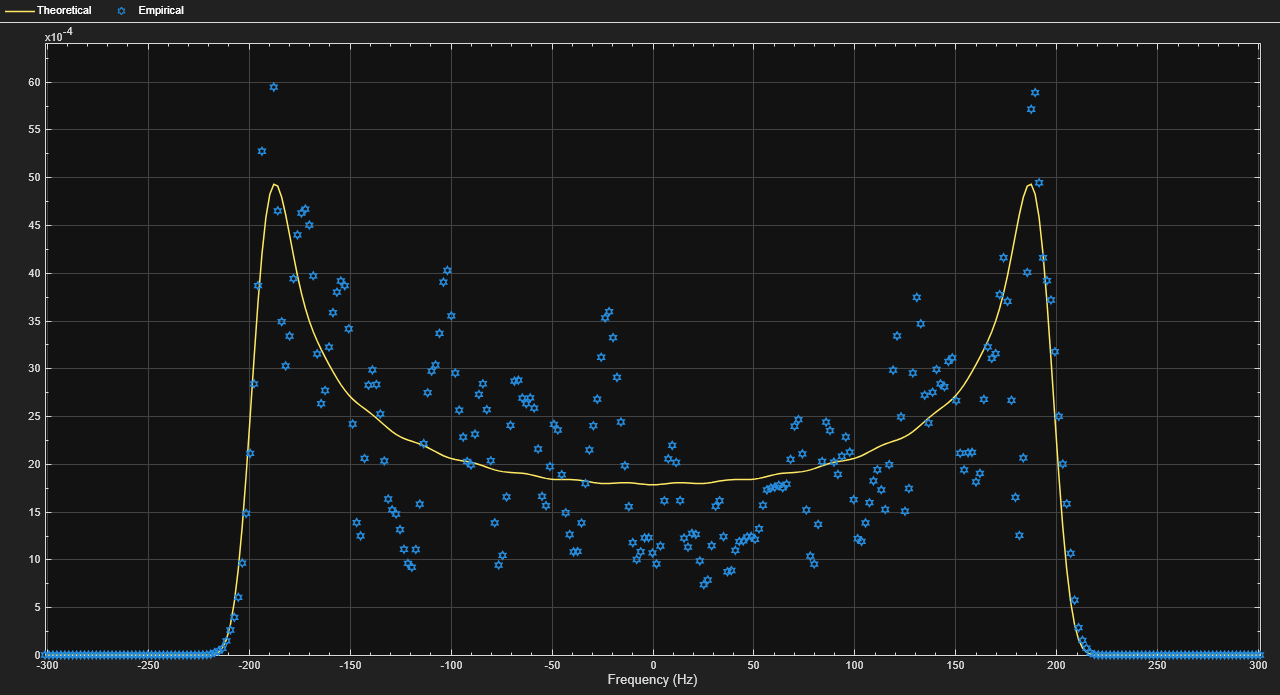SISO Fading Channel
Filter input signal through SISO multipath fading channel
Libraries:
Communications Toolbox /
Channels
Description
The SISO Fading Channel block filters an input signal using a single-input/single-output (SISO) multipath fading channel. This block models both Rayleigh and Rician fading. For processing details, see the Algorithms section.
Examples
Ports
Input
Output
Parameters
Block Characteristics
Data Types |
|
Multidimensional Signals |
|
Variable-Size Signals |
|
Algorithms
References
[1] Oestges, C., and B. Clerckx. MIMO Wireless Communications: From Real-World Propagation to Space-Time Code Design. Academic Press, 2007.
[2] Correira, L. M. Mobile Broadband Multimedia Networks: Techniques, Models and Tools for 4G. Academic Press, 2006.
[3] Kermoal, J. P., L. Schumacher, K. I. Pedersen, P. E. Mogensen, and F. Frederiksen. "A stochastic MIMO radio channel model with experimental validation." IEEE Journal on Selected Areas of Communications. Vol. 20, Number 6, 2002, pp. 1211–1226.
[4] Jeruchim, M., P. Balaban, and K. S. Shanmugan. Simulation of Communication Systems. Second Edition. New York: Kluwer Academic/Plenum, 2000.
[5] Pätzold, Matthias, Cheng-Xiang Wang, and Bjorn Olav Hogstand. "Two New Sum-of-Sinusoids-Based Methods for the Efficient Generation of Multiple Uncorrelated Rayleigh Fading Waveforms." IEEE Transactions on Wireless Communications. Vol. 8, Number 6, 2009, pp. 3122–3131.
